4 Ways To Ensure You Become The Type Of Boss Your People Love And Laugh With (Not At)
It happens every day.
You’ve seen it, and maybe you’ve done it.
Done what?
Talk about a leader behind their back about everything you think you could never say to their face.
Every day, people vent about their leaders with rolled eyes and snarky jokes.
Most leaders have no clue it’s happening to them.

Please note: The organization's success does not exempt one from the backstage devilries.
No level of leadership frees you from your weaknesses. You can lead one of the most successful systems in your sector and still have flaws that frustrate your team.
And here is the truth: The higher one transcends up the organizational chart, the more these weaknesses are illuminated.
So, how do you avoid becoming that leader?
One of the best ways to do that is to make sure your team talks TO you about their challenges.
If your team feels like they can talk TO you, the office drama and gossip drop precipitously.
So, how exactly do you build the conditions for that?
Here are four keys to creating a culture where people can talk to you as a leader, not just about you when you leave the room.
I’ll also walk you through some fresh examples of how this reality plays across our HPG team.
If you don’t think this matters, remember—people don’t quit their jobs these days. They leave leaders and cultures.
1. Ask…Then Brace Yourself
The best way to avoid being the leader everyone complains about is to ask your team for feedback.
Directly.
Face to face.
Then…brace yourself.
It would also help if you raised your pain threshold.
If the feedback you hear from your team surprises or bothers you, don’t tell your face. Smile because your team is giving you a gift.
A current example:
I recently received some feedback from my team as part of an Executive Quarterly {EQ} retreat we did.
I specifically asked them to name where I was getting in the way of our performance. I told them nothing was off-limits, and they didn’t have to worry about my Feeler getting hurt.
Well…they told me.
Some comments about my leadership included:
- I can be impulsive.
- Sometimes, I wig out when things aren’t going well.
- I micromanage when I’m not sure about the outcome.
- Sometimes, our mid-term goals seem unclear or vague.
You know what? They were right.
Sure, I was disappointed to hear each of those nuggets of critique, but my frustration was directed at the man in the mirror. I have blind spots, and I am still a work in progress.
I love my team and their willingness to step in the ring to challenge me with an accurate assessment of my leadership over the last quarter.
Our team often uses the “L” word in our work.
Love = To Fight FOR the Greatest GOOD of the Other.
Here’s the bottom line. To be a Higher Performance leader, you must raise your pain threshold to hear that kind of feedback directly, honestly, and face to face with your team.
Please note:
- You can’t wince.
- You should not deny it.
- You shouldn’t defend yourself.
- You can’t sulk.
Once you hear honest feedback, the correct response is a simple “thank you.”
This is the stuff that strengthens your team and culture.
Sadly, when you look at scandal after scandal across various sectors and leadership spheres, that kind of direct, honest, open feedback is missing because it’s often penalized.
Instead, leaders cultivate cultures of fear, bullying, and self-preservation. In extreme cases, I’ve even heard of dominating leaders forcing staff to resign and demanding they sign NDAs (non-disclosure agreements) on their way out to ensure they won’t talk about how bad things were.
If you want to create irresistible culture, crave the feedback you’d usually curtail, even if it hurts.
Especially if it hurts.
2. Reward It
In case you missed it, honest feedback is something you need to reward when given.
Many senior leaders say they’re approachable when that’s not the case.
Remember, even if you think you’re nice, you hold the keys to hiring and firing people. Most people are afraid to tell you the truth because they’re scared of being penalized, pushed to the side, passed over for promotion, or even fired.
So, when you get honest and even critical input, celebrate it.
In our feedback session (and countless other meetings where I get feedback like this), I must remind myself to let my team know that I’m grateful and that this is precisely what they should be doing and need to hear.
Exemplary leaders say things like:
- Thank you.
- This feedback is a gift.
- That’s fair.
- I’m grateful you care enough to share that.
If you think it’s risky to do this at work, imagine what would happen if this was the dynamic at home. Trust me. The reward is worth the risk.
This is the stuff healthy teams do habitually.
And the team will only be as healthy as the leader.
The Time To Optimize Your Campus Performance Is Now
The Lead Team Institute {LTI} is a step-by-step framework for Optimizing Higher Team Performance (when gravitational pull toward average is working against you).
{LTI} is a complete program of workshops, tools, coaching, and strategies that will equip you to drive Higher Team and System Performance.
3. Ask More Questions
You’ll want to make the honest feedback moments as brief as possible.
Don’t.
When an individual or your team gives you critical feedback, they usually test the waters with something mild and watch for your reaction.
In other words, provoke them to go a few rounds with you to get to the honest truth.
So, in addition to celebrating what they’ve shared, open another round—in the most open tone possible—by asking questions like:
That was so helpful. Thank you. Anything else?
We should get all interference out on the table.
What else are people seeing? What else could help us grow?
I’m learning and need to know this stuff. Any other thoughts or observations?
Yes, that’s bold, but it’s worth it.
Usually, in round two or three —when people feel safe—the big stuff shows up (my impulsiveness showed up in round three of me asking the question).
Yes, this takes humility. But I’ve learned humility comes through two paths:
- Voluntarily
- Involuntary
How does involuntary humility happen? Simple: when you get humiliated by others or by a situation. Humiliation is involuntary humility. When you don’t humble yourself, others are happy to do it for you.
I’m trying to be intentional in taking the voluntary path moving forward.
I don’t always get it right, but I’m fighting hard for me and us.
4. Practice the Two-Month Rule
Ongoing and honest feedback from your team shouldn’t be an annual event or a performance review phenomenon (the yearly performance review is going the way of the video rental store).
You can also have the tightest systems in the world by asking for feedback regularly and still not getting honest responses from your team.
Here is where the “Two Month Rule” comes to play.
If I were your performance coach, I would ask, “when was the last time someone gave you harsh feedback that you took and leveraged to change a leadership behavior that everybody on your team could observe and appreciate?”
If you couldn’t give me an example, I would probably say that your influence is diminishing.
Seriously, if I can’t name a specific challenge that one of my trusted team members gave me in the last two months that helped to keep me off the rocks of average or underperformance, I bet they are also laughing at me and not with me.
Mic drop.
It got me thinking…have I gone through two-month spurts where all I heard was sunshine?
Honestly, I’m just not that good.
And neither are you.
This means it’s time to go back to the team and actively solicit honest feedback.
For me, it’s not just a matter of leading better. It’s a matter of character, care, and credibility.
I want the people closest to me to become better with me. That includes my wife, kids, friends, and team.
The people closest to you should have the best access to you to be For You.
Often in leadership, it’s the exact opposite.
Brand New: A Step-By-Step Framework to Optimize Higher Team Performance (when gravitational pull toward average is working against you).
Every leader I know struggles with average-performing systems and is under the gun to improve. Most lack the confidence and collective talent to make it happen.
I know it’s hard to be that honest to admit you have more questions than solutions.
If you are hungry for change, we can help.
Higher Performance Group exists to Optimize Higher Team Performance.
Don’t think it’s just you and your team who are struggling. That couldn’t be further from the truth.
So how do you Reclaim Your Momentum (LINK to Reclaim Your Momentum {LIVE}) when you are back in the whirlwind and can’t give up any additional time?
The Lead Team Institute {LTI} is a step-by-step leadership development solution that integrates within your regular standing leadership meetings.
In the series of workshops, you will get my entire playbook for Optimizing Higher Team Performance—from start to finish:
- How to optimize team communication
- How to optimize team connection
- How to optimize team alignment
- How to optimize team capacity
- How to optimize team execution
- How to build highly reliable systems
And much more.
The complete package of workshops, tools, assessments, performance coaching and strategies will equip you to build irresistible culture and Higher Team Performance.
Are you ready to lead your team to higher heights? You can get access to all of it today!
More Blog Articles



